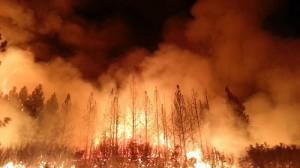
Society is in aggregate.
All of the things we do necessarily interact with each other’s activities. Sometimes, this works out really well, as when we send our kids to school and only one person (thanks, teachers!) has to speak at a 6-year-old level all day, while the rest of the grown-ups can, you know, farm and lawyer and politic and make widgets.
But our activities don’t always mesh. Sometimes, they compound, as when we each throw one piece of plastic out the window and create a floating island of plastic. Alas, the childhood aphorism “leave things better than you found them” seems counter to human nature.
A particular example of this is urban sprawl. We all* want our own house and yard and space to work, live and play, and we want it cheap. Colorado has an even more specific example, which I wrote about during the fires earlier this year. According to the Denver Post, one out of four homes – representing 1.1 million people, in Colorado is in the fire safety “red zone.”
Colorado is a particularly individualistic state. (I always think of Hunter S. Thompson and his directive to shoot his remains from a canon. Who knows what kind of regulation California has to prevent things like that.) As David Sirota writes in Salon, “The libertarian zeal that comes with that frontier spirit naturally leads many to believe they should be able to build whatever they want wherever they want.”
Except, ahem: We might not have built it, but we’re going to pay for it. Sirota reports that wildfire fighting expenses have averaged $1.8 billion a year for the last five years. The more houses that are built in the red zone, the more resources will be poured into saving them.
Gov. John Hickenlooper has issued a proposal to not only charge fees for houses built in high-risk zones, but also to report the risk to insurers. Sirota lauds it as a good alternative to prohibiting development, which would go against Colorado’s libertarian culture.
I’m inclined to agree. In the context of our society, it’s almost impossible to find anything that isn’t “subsidized.” The food we eat, the places we build on, the cars we drive: How do you establish accurate value to not only the seller, but to the community we live in? Many municipalities charge five- or 10-cent fees for plastic bags. The grocery stores were happy to “give” them away – building the cost into their prices – but many found the distribution of plastic bags was a societal ill, and opted to disincentivize them.
As we try to encourage actions that will make our world better, we should constantly be thinking of ways to discourage actions that scale towards disaster.
*Not all of us, but enough




